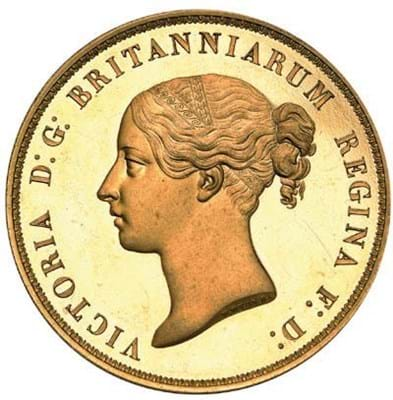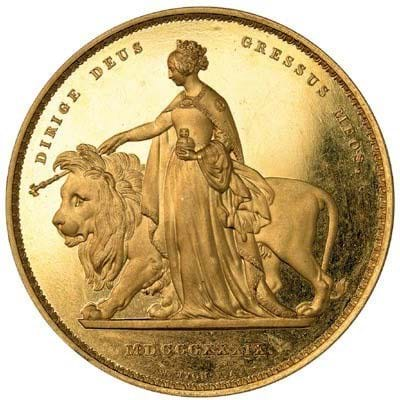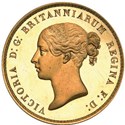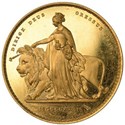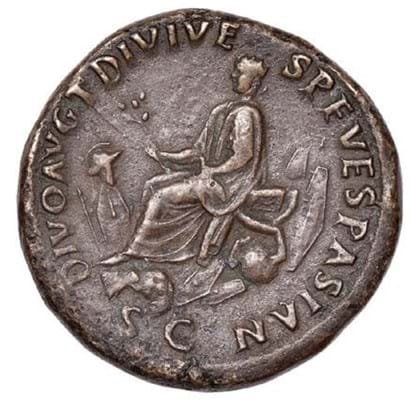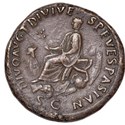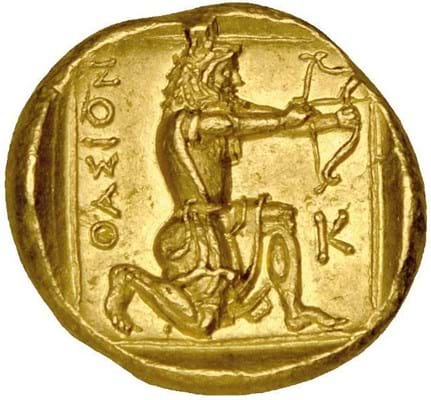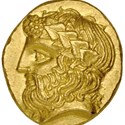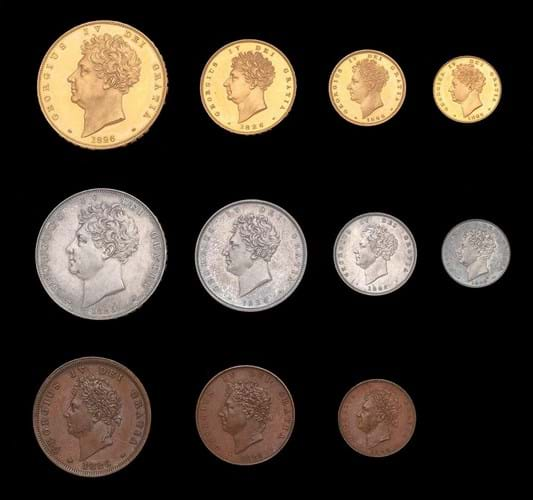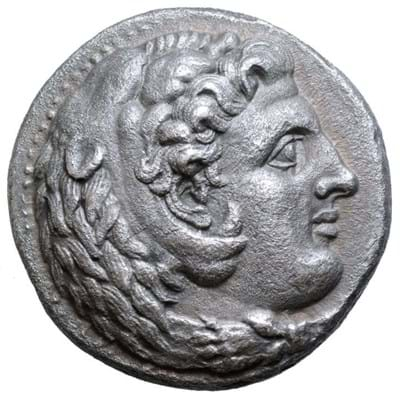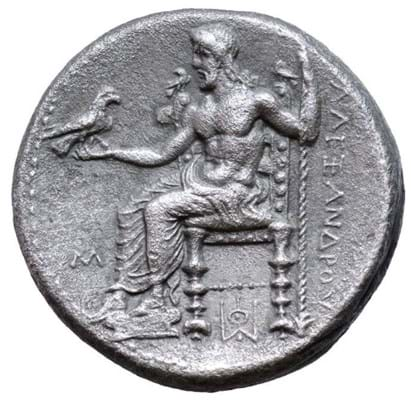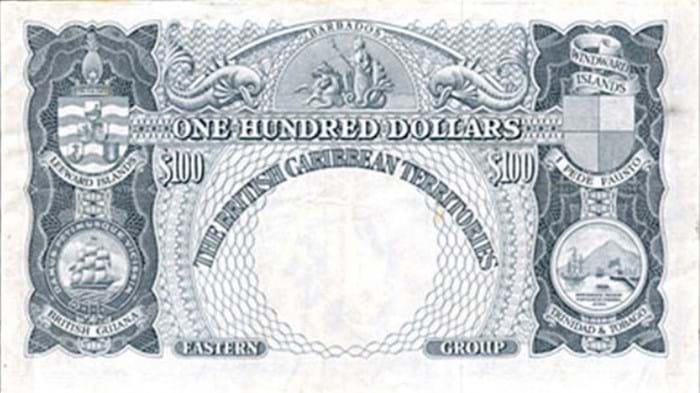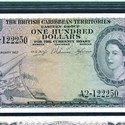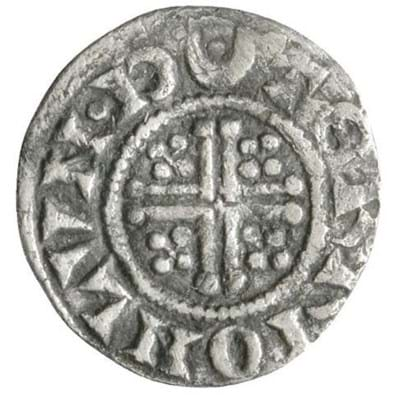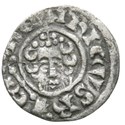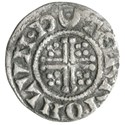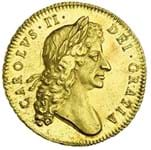Baldwin’s of St James’s
On September 22, Baldwin’s of St James’s sold this “good, extremely fine” example of the 1839 Una and the Lion five pound coin for £340,000. It was twice the previous high for the coin and a record for a British five pound piece.
Ranked among the most beautiful of all British milled coins, the gold five pounds was part of the first coin issue created in 1838, shortly after Victoria came to the throne. The obverse displays the famous ‘young head’ portrait by William Wyon while the reverse portrays the queen as Una leading the lion. It occurs with two small variant reverse legends, based on Psalm 119:133, which translates as May God Direct My Steps.
There is little evidence these coins were made for general circulation, with most collected as commemorative issues. In March 2017 an Una and the Lion five pound coin (with some minor surface marks) left its estimate far behind when it fetched £170,000 at Dix Noonan Webb.
Dix Noonan Webb
A rare sestertius showing one of the earliest views of the Colosseum made £310,000 as part of a sell-out collection of Roman bronze coins offered at Dix Noonan Webb on February 15.
The coins were acquired over a remarkably short period of eight years from 1933-41, with this coin bought by the collector in February 1939.
The sestertius dated from the brief reign of Divus Titus, who was Roman emperor from 79-81AD. Only 10 specimens of this type are known, of which seven are in museums.
The posthumous coin, from 81-82AD, depicts the Colosseum, which had been finished during the reign of Titus. It had been estimated at £60,000-80,000.
Morton & Eden
A princely collection of classical coins offered by Morton & Eden on May 24 included this gold drachm struck at Thasos c.380BC. Virtually as struck and very rare, it sold at £60,000 (estimate £30,000-40,000).
The reverse scene of a kneeling archaic figure of Herakles as an archer is one of the very few instances in classical times when we can be quite sure that a coin design is taken from large-scale art. The sculpture which served as the model, now in the Archaeological Museum, Istanbul, was discovered in 1866 in the gate of the city’s west wall.
It was also adopted as the motif on amphora seals of Thasian wine – making the bearded figure of Dionysos a suitable subject for the coin’s obverse.
Bonhams
The 1826 proof set, bearing the head of George IV, comprises four gold coins – five and two pounds, sovereign and half-sovereign – and four silver coins – crown, halfcrown, shilling and sixpence. The penny, halfpenny and farthing are in bronze.
This set provided Bonhams Knightsbridge with one of its top coin prices of the year when it took £82,000 on November 22. The gold coins had some light hairlines, otherwise the set was deemed ‘extremely fine or better throughout’.
Dix Noonan Webb sold another 1826 proof set (comprising only the eight precious metal coins with ‘minimal hairlining’) in December 13-15 for £130,000. That set was on the market for the first time since 1938 when it had sold for £35.
Roma
Silver dekadrachms have long been among the most desired of ancient coins by virtue of their impressive size and weight, and the large canvas they allowed for showcasing the engraver’s art.
Fewer than 20 dekadrachms of Alexander the Great are known to exist – the majority discovered in a hoard in 1973. To one side is the head of Herakles wearing a lion-skin headdress and to the other is Zeus seated on a throne with eagle-tipped finials holding a sceptre.
They were probably struck in Babylon c.325-323BC and formed part of a massive conversion of bullion seized from the Persian royal treasuries.
This ‘extremely fine’ example, from a private Canadian collection, sold for £100,000 at Roma Numismatics on September 21.
Spink
The British Caribbean Currency Board $100 note is one of the rarest of the Queen Elizabeth portrait notes. This example with the date January 2, 1957, and the serial number A2- 122250, is among the finest examples ever found.
It proved one of the star lots in the first tranche of the Bruce Smart collection of Commonwealth banknotes offered by Spink on April 25. It doubled hopes, selling at £22,500.
London Coins
This Commonwealth period gold unite from 1653 sold for £8000 at London Coins on June 4. The simple ‘breeches money’ from the post-regicide period carries no portrait and instead includes the joined shields of England and Ireland and the legends God With Us and Commonwealth of England.
These were among the last of the British hammered coins. Under pressure from forgers and coin clippers, Pierre Blondeau offered the solution of milled coins with edge writing – an innovation finally taken up by Parliament in 1656.
TimeLine
Although documents referring to the production of dies for English round halfpennies and round farthings in the reign of Henry III have been known since the 18th century, it was only in 1991 that the first coin (a farthing) was discovered by a metal detector.
Since then a range of different examples from the so-called ‘short cross period’ have been found. This one, a half penny from 1222 carrying the name of the London mint moneyer Terri, was dug up last year in Essex. At TimeLine Auctions on November 21 it sold at £9000.



